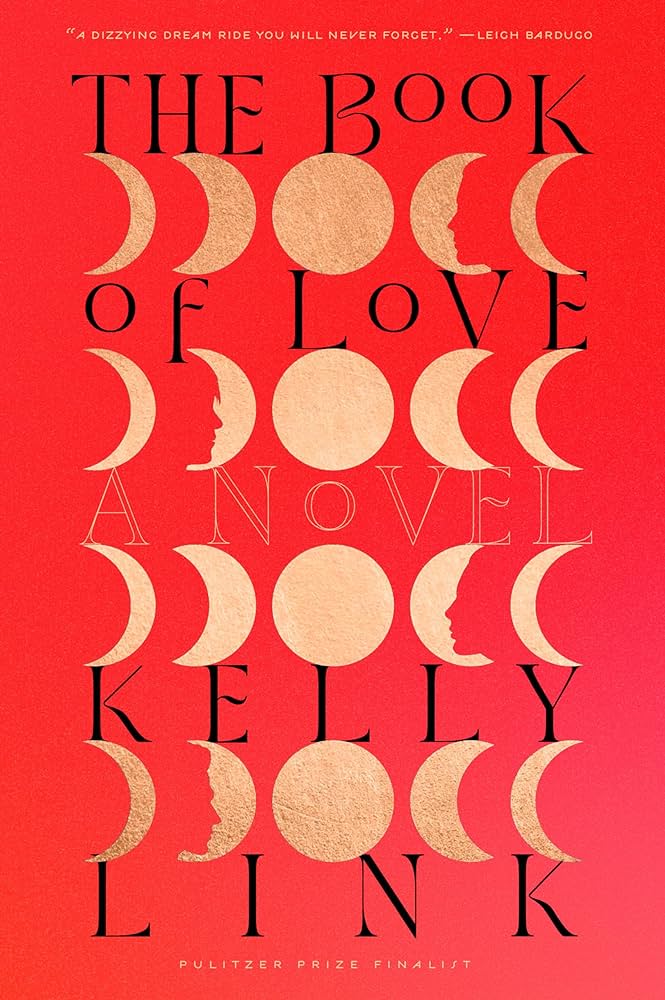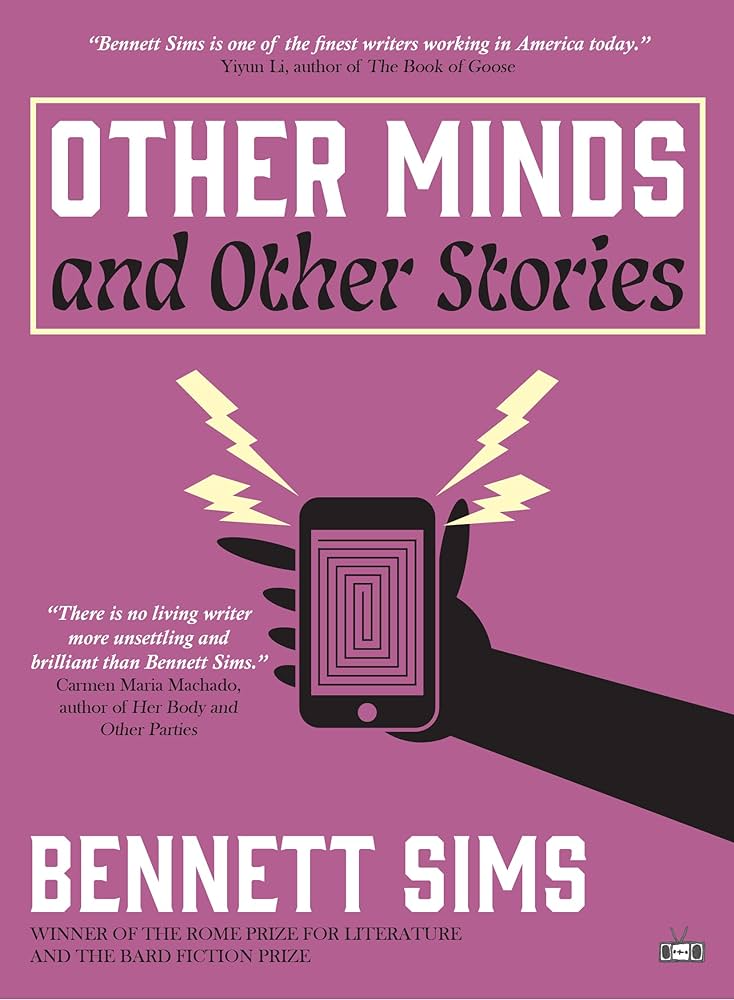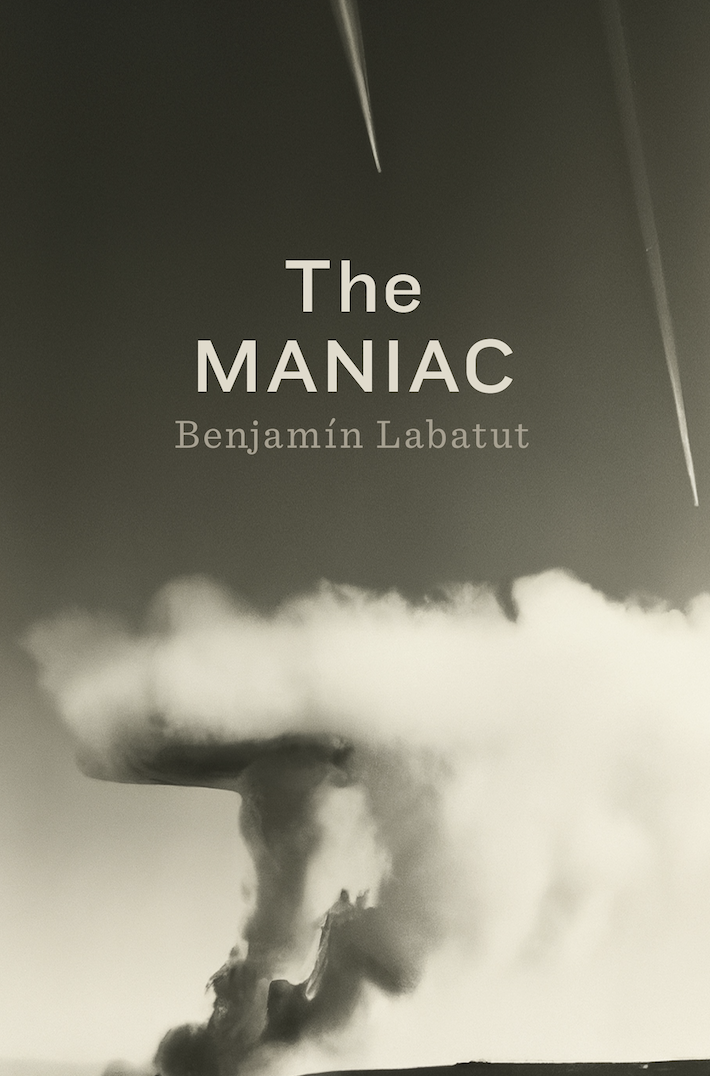The IQ Bubble
 Oskar Schell, age nine, is a genius. Likewise Billy Argo and T.S. Spivet, both 10. At 14, Alma Singer is at least hella precocious. And with subspecialties including M-theory, French horn, and the Future of Humanity, her contemporary Ruprecht van Doren is off the charts (though with a name like Ruprecht van Doren, you’d sort of have to be). Genius is, by definition, exceptional, and until recently it was only in Lake Wobegon and the films of Wes Anderson that all children could be above average. But in the last few years the Anglo-American novel, full of characters like the foregoing, has come to resemble a kind of overdriven gifted-and-talented program: one your own kid would never make it into.
Oskar Schell, age nine, is a genius. Likewise Billy Argo and T.S. Spivet, both 10. At 14, Alma Singer is at least hella precocious. And with subspecialties including M-theory, French horn, and the Future of Humanity, her contemporary Ruprecht van Doren is off the charts (though with a name like Ruprecht van Doren, you’d sort of have to be). Genius is, by definition, exceptional, and until recently it was only in Lake Wobegon and the films of Wes Anderson that all children could be above average. But in the last few years the Anglo-American novel, full of characters like the foregoing, has come to resemble a kind of overdriven gifted-and-talented program: one your own kid would never make it into.
 To be sure, the ‘tween geniuses of Jonathan Safran Foer et al. are not without precedent. It’s been almost two centuries since Dickens loosed his intrepid moppets on the streets of London. (Little David Copperfield is, if not quite Mensa material, surely a Child of Distinction.) And American literature has always been unusually interested in kids. If much of Russian fiction, as Dostoevsky reportedly said, emerged from Gogol‘s overcoat, our own novelistic tradition might be said to have emerged from that of Mark Twain, who found in his Hannibal boyhood both a wellspring of vernacular comedy and a nexus of the great American tensions: freedom versus settlement, the individual versus society, the past versus the future. Huck Finn rendered James Fennimore Cooper’s Mohican fantasias on the same themes instantly old hat. Who needs noble savages when you’ve got adolescents? (Is there any difference, in the end?)
To be sure, the ‘tween geniuses of Jonathan Safran Foer et al. are not without precedent. It’s been almost two centuries since Dickens loosed his intrepid moppets on the streets of London. (Little David Copperfield is, if not quite Mensa material, surely a Child of Distinction.) And American literature has always been unusually interested in kids. If much of Russian fiction, as Dostoevsky reportedly said, emerged from Gogol‘s overcoat, our own novelistic tradition might be said to have emerged from that of Mark Twain, who found in his Hannibal boyhood both a wellspring of vernacular comedy and a nexus of the great American tensions: freedom versus settlement, the individual versus society, the past versus the future. Huck Finn rendered James Fennimore Cooper’s Mohican fantasias on the same themes instantly old hat. Who needs noble savages when you’ve got adolescents? (Is there any difference, in the end?)
Even in America, however, literary innocence has historically been a rigged game. With its tropism for irony, the novel as a form prods its protagonists toward experience, toward compromise, and toward “sivilization” – in short, to growing up. Unless, that is, the child is more civilized than the man, as seems to be the case with the current bumper crop of prodigies. These kids’ real forebears are not Augie March or Maisie Farange, but comic book superheroes, Harriet the Spy, and – preeminently – the novels of J.D. Salinger. Like the Glasses, they seem too good for the lousy adult world, and perhaps too good to be true.
 In this (and, it must be said, in its gargantuan length), Adam Levin’s literary debut, The Instructions, would seem to be some sort of apotheosis. Its 10-year-old narrator and protagonist, Gurion Maccabee, is not just another kid genius with an improbable name; he’s also worldly, charismatic, quick with a joke or to light up your smoke, a martial artist, a sometime-telepath, a devout half-Ethiopian, half-Ashkenazi Israelite…and, oh, yeah: quite possibly the Messiah. It’s easy to see why, even if you liked Extremely Loud and Incredibly Close and The Collected Works of T.S. Spivet, you might feel you need this wisenheimer’s 1,000-page scripture like you need a hole in your head. But The Instructions turns out to be, for better and for worse, something like the Only Kid Genius Novel You’ll Ever Need. That is, it simultaneously makes good on the subgenre’s promise and exposes its limitations. And en route to its wacko finale, it begins to illuminate the begged question: Why so much genius? Why now?
In this (and, it must be said, in its gargantuan length), Adam Levin’s literary debut, The Instructions, would seem to be some sort of apotheosis. Its 10-year-old narrator and protagonist, Gurion Maccabee, is not just another kid genius with an improbable name; he’s also worldly, charismatic, quick with a joke or to light up your smoke, a martial artist, a sometime-telepath, a devout half-Ethiopian, half-Ashkenazi Israelite…and, oh, yeah: quite possibly the Messiah. It’s easy to see why, even if you liked Extremely Loud and Incredibly Close and The Collected Works of T.S. Spivet, you might feel you need this wisenheimer’s 1,000-page scripture like you need a hole in your head. But The Instructions turns out to be, for better and for worse, something like the Only Kid Genius Novel You’ll Ever Need. That is, it simultaneously makes good on the subgenre’s promise and exposes its limitations. And en route to its wacko finale, it begins to illuminate the begged question: Why so much genius? Why now?
And a Child Shall Lead Them
The Instructions opens with our narrator inside a cage. Or rather, CAGE—a special facility within Aptakisic Junior High School for students with behavioral problems. It isn’t explained at first how this CAGE works, exactly, or what those initials stand for. What we get, instead, is Gurion’s voice—baroque, headlong, impertinent, a gallimaufry of high-flying excursus and middle-school pidgin (“banced,” “snat,” “chomsky”). His monologue (“Scripture,” he insists) careens from linguistics to theodicy to how to build your own small arms from household oddments. Underneath, though, a single question niggles: What’s a kid like you doing in a place like this?
Levin parcels the answer out slowly. Which turns out to be a good thing, because the plot—basically boy meets girl, girl’s a goy, mayhem ensues—is a pretty thin reed on which to hang three pounds of book. The entire novel covers only the four days leading up to what a mock-prefatory note has hinted will be some kind of in-school insurrection (variously referred to as “the Damage Proper;” “the 11/17 Miracle;” and “the Gurionic War.”) In the absence of much action, it’s the mystery of Gurion’s personality that keeps us reading. Well, that and to see what kind of crazy shit he’ll say next.
 As any kid genius will, Gurion tap-dances all over the line between precocity and preciousness. Levin, who studied with George Saunders at Syracuse, clearly admires the miglior fabbro’s demotic hijinks, and Gurion often achieves a Saundersish charm, both in rat-a-tat dialogue and in casual stabs of description that bring the world of junior high back like yesterday’s hot lunch. Ron Desormie “taught Gym in shorts that his wang stretched the crotch of”—you pretty much had me at “wang.” But just as often there’s an inability to leave well enough alone (Desormie also “hummed out a melody with lipfart percussion and aggressively dance-walked and thought it was strutting.”)
As any kid genius will, Gurion tap-dances all over the line between precocity and preciousness. Levin, who studied with George Saunders at Syracuse, clearly admires the miglior fabbro’s demotic hijinks, and Gurion often achieves a Saundersish charm, both in rat-a-tat dialogue and in casual stabs of description that bring the world of junior high back like yesterday’s hot lunch. Ron Desormie “taught Gym in shorts that his wang stretched the crotch of”—you pretty much had me at “wang.” But just as often there’s an inability to leave well enough alone (Desormie also “hummed out a melody with lipfart percussion and aggressively dance-walked and thought it was strutting.”)
Such compulsive effervescence is both a liability and an asset. On the one hand, it flattens the characters around Gurion (with a couple of exceptions), and thus the stakes for the impending “Miracle”-cum-“War.” Eliza June Watermark, his shiksa love-interest, is more a cluster of attributes than a fully formed person. The keepers of the CAGE are, like the lipfarting, dance-walking Desormie, cartoons. And I’d swear that Flowers, the middle-aged juju man who guides Gurion through the writing of the scripture we are even now reading, is actually Bleeding Gums Murphy, from The Simpsons:
Even if what you write about is boring, you can’t be writing boring. Seem to me like you want to write about you wang, anyhow. Now you wang—that’s a good example cause it’s boring to me […] One thing ain’t boring to me about you wang is how you’re callin it wang.
On the other hand, Levin ain’t boring, which is important, when your scripture is also a tome. And our inability to see actual people behind Levin’s antic renderings is a powerful corollary for what will come to seem the narrator’s egocentrism, the child trapped inside the prodigy.
Youthful Confusion
The first half of The Instructions is also enlivened by lengthy “inserts”: emails, school assignments, a psychological assessment. Through these chinks in the monologuist’s armor, we begin to glimpse Gurion from angles other than his own. Flowers may not be, as therapist-in-training Sandra Billings suggests, his “imaginary friend” (after all—disappointingly—Mr. and Mrs. Maccabee can see him, too), but her otherwise reasonable conclusions and the vehemence with which Gurion doth protest remind us that, like any scripture, this one is open to interpretation:
It may be the case […] that Gurion is by nature an ideal student. […] On the other hand, it may be the case that Gurion, once an ideal student, has become […] the dangerous and even doomed boy indicated by his record.
 It is in this kind of irony, rather than in verbal vaudeville, that Levin begins to earn the jacket-copy comparisons to David Foster Wallace. His greatest gifts are also, as Gurion would put it, his most “stealth”: a dialectical intelligence, and crucially, a sense of paradox. The specific paradoxes to which the novel keeps returning involve justice, peace, and power. And these are not mere abstractions, confined to the Torah stories that obsess Gurion; their real-world consequences range from in-school bullying to foreign policy. Such subtexts, handled subtly at first, come crashing into the foreground in a bravura set-piece near the novel’s midway point. The child prodigy thinks back to September 11 of his kindergarten year, and to events it takes more than a high Myers-Briggs score to comprehend.
It is in this kind of irony, rather than in verbal vaudeville, that Levin begins to earn the jacket-copy comparisons to David Foster Wallace. His greatest gifts are also, as Gurion would put it, his most “stealth”: a dialectical intelligence, and crucially, a sense of paradox. The specific paradoxes to which the novel keeps returning involve justice, peace, and power. And these are not mere abstractions, confined to the Torah stories that obsess Gurion; their real-world consequences range from in-school bullying to foreign policy. Such subtexts, handled subtly at first, come crashing into the foreground in a bravura set-piece near the novel’s midway point. The child prodigy thinks back to September 11 of his kindergarten year, and to events it takes more than a high Myers-Briggs score to comprehend.
In the novel’s second half, “The Gurionic War,” Levin dispenses, somewhat disastrously, with these insertions, leaving us with hundreds of pages of unadulterated prodigy. If this shaves a few ounces off the book, it also lays bare the geologic pacing of the plot. And the solipsism of Gurion’s point-of-view becomes not just something that seduces the other Aptakisic ne’er-do-wells, but something inflicted on the reader. It’s as if The Instructions has painted itself into a corner. Nonetheless, there’s always the possibility that Gurion will run up a wall, or sprout wings, and so we press on to the long-promised climax.
I’m not going to spoil that climax, other than invoking Einstein’s suggestion that no worthy problem is ever solved on the plane of its conception. On the level of action, Levin gives us a significant payoff—he has to, after so many pages, or we’d want to egg his house—but in aesthetic terms, I was unpersuaded. Until. Until the abrupt return (right around the point where Philip Roth makes a cameo) of other, opposing voices. The novel’s conclusion, as distinct from the climax, juxtaposes several points-of-view and timeframes, throwing the central questions of Gurion’s existence back into high relief. And what saves the novel from self-indulgence is that they are also among the burning ethical questions of our time. For example: who has the right, in a fallen world, to dispense justice? Who has the right to judge? And what separates a savior from a lunatic?
Cult of the Child
It can’t be an accident that the current boom in novels about kid geniuses (or wizards) coincides with the dawn of a new age of catastrophe: buildings falling, anthrax, school shootings, wars, near economic collapse, and the palpable twilight of the American empire. Back in the ‘60s, establishment types liked to imagine that the young people mucking up the nation’s campuses were merely restaging their childhood as politics – acting out their Oedipal fantasies. Now, though, it has begun to seem that the terms are reversed; that we are trying to escape our political traumas by returning to childhood. Botox, Facebook, Pixar, skateboards and ringer tees…
 In particular, Dave Eggers’ McSweeney’s, which publishes The Instructions, has made childhood into a cult phenomenon. Its quarterly is nostalgic in ways big (design) and small (plenty of coming-of-age stories), and most of its best books (What is the What, The Children’s Hospital, Here They Come) center on the experiences of children. Indeed, childhood delimits the McSweeney’s aesthetic as such—the meringue of whimsy on top, and underneath the moral fiber that is our birthright. (“I am tired,” runs one epigraph to A Heartbreaking Work of Staggering…er… Genius. “I am true of heart!”)
In particular, Dave Eggers’ McSweeney’s, which publishes The Instructions, has made childhood into a cult phenomenon. Its quarterly is nostalgic in ways big (design) and small (plenty of coming-of-age stories), and most of its best books (What is the What, The Children’s Hospital, Here They Come) center on the experiences of children. Indeed, childhood delimits the McSweeney’s aesthetic as such—the meringue of whimsy on top, and underneath the moral fiber that is our birthright. (“I am tired,” runs one epigraph to A Heartbreaking Work of Staggering…er… Genius. “I am true of heart!”)
 The editors of N+1, precocious themselves, were quick to spot this. “Eggersards returned to the claims of childhood,” they noted in their first issue. But they were incorrect to claim that “Transcendence would not figure in [Eggersard] thought,” as anyone can tell you who remembers that moment at the end of AHWOSG where Dave and his kid brother run back and forth on the beach chasing the world’s most symbolic frisbee. To be a child is, for the duration of that childhood, to be transcendent.
The editors of N+1, precocious themselves, were quick to spot this. “Eggersards returned to the claims of childhood,” they noted in their first issue. But they were incorrect to claim that “Transcendence would not figure in [Eggersard] thought,” as anyone can tell you who remembers that moment at the end of AHWOSG where Dave and his kid brother run back and forth on the beach chasing the world’s most symbolic frisbee. To be a child is, for the duration of that childhood, to be transcendent.
The kid genius is, then—almost uniquely in our culture—a nakedly utopian figure (though a conservative one, in that his promised land lays in the past). He is wise. He is powerful. He is moral. The grinding compromises of bourgeois life and the adult obtusenesses that stands in for it do not concern him; growing up is selling out. He will, like Oskar Matzerath of The Tin Drum (for whom Foer’s Oskar is presumably named) stay small, and, in so doing, stay pure.
Putting Away Childish Things
At its best, the kid genius novel works as a kind of allegory, albeit at the cost of turning everything—even the world-historical—personal. At its worst, it represents just another flight from the ethical, into the ready embrace of the aesthetic. In the end, the signal achievement of The Instructions is that it manages to reopen the communicating channels between these binaries.
In so doing, this entertaining novel clears at least one of the hurdles of art: its strengths become inextricable from its weaknesses. Levin’s willingness to hew to the boundaries of his character’s skull—a kind of cage inside a CAGE inside a cage inside a cage—may sometimes make us wish Gurion would just take a Xanax and go to bed. But it also brings us into the presence of a fully realized consciousness, which is surely one of the noblest tasks of fiction.
To call The Instructions a young man’s book is to say partly that Levin, who himself may be a kind of genius, has many books ahead of him. And like Paul Murray’s Skippy Dies, that other hypertrophied iteration of the kid genius novel, this one ultimately keeps in view a world of very adult consequences. To the innocence we’ve been protesting this last decade, it manages to restore connotations of blindness, gullibility, and misapprehension. And so it may mark both the culmination and the dissolution of its subgenre—a turn away from the handsome doll-furniture of our childhood rooms, and toward the world writ large.
Sidebar: A Brief Timeline of the Literary Kid Genius
- Seymour Glass, Seymour: An Introduction (1963)
- Simons Everson Manigault, Edisto (1984)
- Phillip, A History of Luminous Motion (1989)
- Hal Incandenza, Infinite Jest (1996)
- Magid Iqbal, White Teeth (2000)
- Ludo Newman, The Last Samurai (2002)
- Oskar Schell, Extremely Loud and Incredibly Close (2005)
- Blue van der Meer, Special Topics in Calamity Physics (2006)
- Billy Argo, The Boy Detective Fails (2006)
- Rumika Vasi, Gifted (2007)
- Saul Dawson-Smith, The Truth About These Strange Times (2008)
- T.S. Spivet, The Collected Works of T.S. Spivet (2009)
- Ruprecht van Doren, Skippy Dies (2010)
- Gurion Maccabee, The Instructions (2010)






















